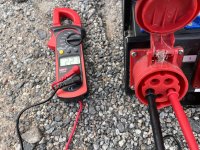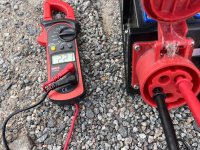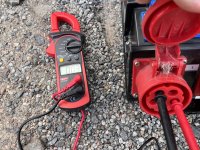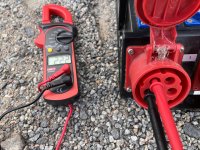Obsidien
Standard Member
This could just be a legal limitation : here, in France, for EV charging, 16A loading is not authorized on standard home socket, but limited to 10A (who said 2.2Kw at 220V ?). Why ? Because standard socket can handle 16A only for a short time ; 10A is for the long time (socket's metal oxydation).
To slow load at 16A, you must install a dedicated socket, patented by Legrand (and ultra costly).
In real world, non technical people install wallbox to load up to 11kw. Some more expert people (like me) uses 32A charger with caravan socket (can handle 32A) => this is very secure electrically but not legal because caravan socket does not have obturators in holes, but it works very well. To bypass that, you can remove sockets and direct-connect wires to switch.
But in vain : cable attached wallbox are not legal here too, because type 2 connector had no obturator holes, too ... (yes, France is a very strict normative country).
As some others here, I think than ZS inverter can handle as much as charging power : so 6kw could be possible on V2L. But that 32A so you need a good type 2 socket, with a good cable (6mm² prefered than 4mm²) to a good installation.
Nothing impossible here. You can be able to do a home backup powerbank, if you want (i want !).
But, also, as indicated on previously posted video : there's no earth.
What are dangers to people using it ?
More experimentations needed...
To slow load at 16A, you must install a dedicated socket, patented by Legrand (and ultra costly).
In real world, non technical people install wallbox to load up to 11kw. Some more expert people (like me) uses 32A charger with caravan socket (can handle 32A) => this is very secure electrically but not legal because caravan socket does not have obturators in holes, but it works very well. To bypass that, you can remove sockets and direct-connect wires to switch.
But in vain : cable attached wallbox are not legal here too, because type 2 connector had no obturator holes, too ... (yes, France is a very strict normative country).
As some others here, I think than ZS inverter can handle as much as charging power : so 6kw could be possible on V2L. But that 32A so you need a good type 2 socket, with a good cable (6mm² prefered than 4mm²) to a good installation.
Nothing impossible here. You can be able to do a home backup powerbank, if you want (i want !).
But, also, as indicated on previously posted video : there's no earth.
What are dangers to people using it ?
More experimentations needed...



